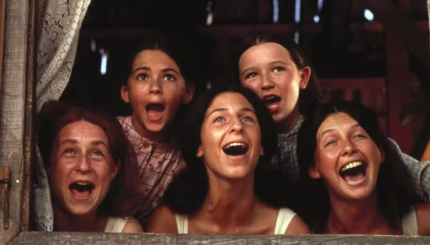Reprinted from Jewish Ideas Daily.
Are Jews a “nation” or a “people”? The Hebrew term am means both. Both terms, moreover, have been subjected to disapprobation in our time—although not nearly to the extent of “race,” a term that Jews themselves stopped using nearly a century ago. How, then, are we to think about the mounting genetic evidence that points to Jewish biological continuity over time?
The field of genetics has been offering up sensational new observations about the historical record of Jewish origins, exile, and migrations. On the men’s side of the aisle, one of the most dramatic discoveries is that both Ashkenazi and non-
kohanim—traditionally, descendants of the biblical high priest Aaron—share an extended haplotype or DNA sequence variation that does indeed distinguish them from other Jews (as well as non-Jews). The divergence is estimated to have taken place about 3,200 years ago (plus or minus a thousand years): that is, well before the dispersion of the Jewish people into communities around the Middle East and Europe. Although it remains difficult to say whether the lineage traces to Aaron himself, scientific research does support the self-identification of many or most kohanim today.
In the women’s section, the results are equally profound. Analysis of mitochondrial DNA, which is passed down only by mothers, indicates that four lineages—that is, four specific women in the Middle Ages—were the originators of 40 percent of the entire Ashkenazi population. Somewhere before the 12th century, these four founders, whose own genetic ancestors hailed from the Near East, appeared in Europe, probably in the Rhine Valley, to become the matriarchs of much of the Ashkenazi world. There may then have followed a long period of “bottleneck,” without significant population growth, in which mutations may have manifested themselves in the form of genetic disorders. Such characteristically Ashkenazi diseases as Tay-Sachs may have been one byproduct of such group cohesion and slow growth.
With your help, My Jewish Learning can provide endless opportunities for learning, connection and discovery.
Similar founder events appear in other regions. Jews of Mumbai can trace their descent back to five women, while Jewish communities in Dagestan and Georgia trace three-fifths of their genetic variations to one woman in each region. Forty-three percent of Iraqi Jews descend from five women; among Iranian Jews, 41 percent descend from another six.
And now science is extending and expanding our view still farther back in time. A paper published earlier this year in the American Journal of Human Genetics sampled seven Jewish communities (Iranian, Iraqi, Syrian, Italian, Turkish, Greek, and Ashkenazi). Provocatively titled “Abraham’s Children in the Genome Era,” it shows how groups sharing a common ancestry formed independent clusters over time. Thus, Ashkenazi Jews bear the closest similarity to Europeans, while Iranian, Iraqi, and Syrian Jews are closer to Druze, Bedouins, and Palestinians. The split between Middle Eastern and European Jews (the oldest group in the latter category being Italian Jewry) is estimated to have occurred between 100 and 150 generations ago, that is, between roughly 500 B.C.E. and the first century of the Common Era. In all cases, the farther away the group is in distance and time from Near Eastern origins, the greater its similarity to the local populations.
Several things stand out. First and foremost, the origins of the vast majority of today’s Jews, when plotted, overwhelmingly cluster in the Levant, between Europeans to the north and Middle Easterners to the south. Second, the challenge of maintaining the cohesion of Jewish communities in the Diaspora, though obviously a matter of religious and cultural mandate, was also biological, met through fundamentally intimate choices about marriage and reproduction (and complicated by incidences of rape and intermarriage). Reflected in the highly sophisticated science and dizzying statistics are innumerable individual decisions concerning what we would now call Jewish identity.
Even as the scientific data lend a poignant human dimension to the already well-known history of Jewish dispersal and survival, they also provide factual validation of that history. In doing so, they simultaneously make a hash of certain counter-narratives—most recently and notoriously, Shlomo Sand’s imagined creation tale of Eastern European Jewry by means of the mass conversion of the Khazars, a notion cribbed from Arthur Koestler’s The Thirteenth Tribe (1976) and reworked by Sand in his The Invention of the Jewish People.
Most research into Jewish genetics research is undertaken for a purpose: namely, to address heritable diseases. Historical observations are a secondary byproduct. Learning more about breast cancer and Tay-Sachs is vastly more critical than locating the Ten Lost Tribes. The point is an important one, rebutting invidious assertions that Jews are primarily concerned with understanding and preserving their “bloodlines.” In any case, similar genetic research goes on around the world, from Lebanon to Korea. Finally, the results of the research say nothing about questions of “intelligence” or about Jewish “genius.”
But what about “nation,” “people,” and “race”? Social scientists view “race” as a toxic concept, one that will inevitably be used to promote inequality and rationalize domination. Some are therefore also suspicious of genetic research, which they see as a means of re-inscribing race as a social category and covertly legitimizing inequality. Among scientists themselves, no reputable researcher would use the term “race.” At the same time, however, geneticists and medical scientists do not shy away from acknowledging the reality of human biological groupings.
As for “nation” and “people,” Jews are indeed a nation in a loose biological and historical sense. Peoplehood, a modern term, is in a somewhat different category: ultimately, it signifies a voluntary condition, entered into with God and as a personal choice to share a group fate or destiny. With the continuing reality of geographical movement and intermarriage, the decision to perpetuate or to join a people on a journey that has already lasted for millennia has become more profoundly consequential than ever—more consequential, one might venture, than its biological ramifications alone.


